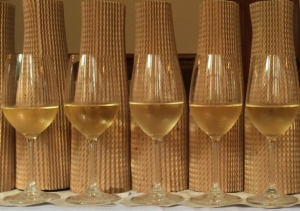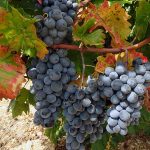
Wine tasting (degustation) means to evaluate the wine firstly with the senses and then intellectually. Wine tasting can be done professionally in a methodical and programmed way, or it can be done amateurishly and more arbitrarily in order to gain a wine culture, to catch the harmony of wine and food, and to be a more conscious consumer.
Wine tasting techniques vary according to purpose. In general, in a tasting, the wine is visually inspected in a suitable glass, in a bright environment, on a white background. Colors, clarity, sediments, tears from the goblet give us an idea of the wine. Then an evaluation is made on the smell of the wine. The first smells that hit the nose, the smells that emerge as the wine is turned in the glass, the base notes and bouquets allow us to learn about some issues such as the type of wine, grape variety and region. In addition, in this second step, we make the evaluations that we can detect by smell, such as whether the wine has a defect or not. In the third step, the body, balance, minerality, acidity, aromas and finish of the wine are evaluated on the palate. Finally, after all the sensory evaluations, we make a total evaluation of the wine and form a judgment about the wine, taking into account the price-quality balance.
There are some generally accepted rules that should be followed before and during wine tasting. For example, people who will taste before tasting (degustator) should be ready in a way that will not be full or hungry, they should avoid heavy smelling foods that can stay on the palate for a long time. They should be balanced against excessively salty or sweet meals during the day, and they should be careful not to overdo it in the use of perfumes or deodorants. It is necessary to be careful not to use tobacco products, as the use of tobacco products before and during tasting will have a negative effect on taste and smell. The temperature of the tasting environment should be controlled, bright and odorless.
Blind Tasting
The type of tasting that is done by hiding the wine bottles is called blind tasting. The purpose of hiding the bottles is to prevent the formation of prejudices about the region of the wine from the bottle shapes. Naturally, the fact that the label is hidden means that the producer, region and grape varieties are also unknown. This kind of concealment is made so that the degustators can make an objective assessment, and the tastings in which the wines are known but the tasting order is not known are also considered as blind tastings. There are also types of tasting in which the eyes are closed, called full blind tasting. The purpose of blind tasting is to be able to make an objective assessment of the wine, but nowadays there is a belief among the people that blind tasting is to find the brand, harvest, grape variety, region and vineyard of a wine. Experienced degusts can of course recognize wines they have experienced before and can make predictions. As a result, the style of some producers, the characteristics of the regions and the characteristic structures of the grapes can be recognized and distinguished after a certain accumulation. But if we consider that there are around 8,500 producers in Bordeaux alone and that they produce various wines even if they are regional in nature, and if we consider their harvest, tens of thousands of wines emerge. World wine producing regions, producers, grape varieties and blends etc. If we calculate it, we should not expect to predict the harvest, region, grape variety and vineyard of any wine in blind tasting, and it does not mean that it will not benefit anyone.
Horizontal Tasting
Horizontal tasting is a type of tasting to evaluate a grape variety or a regional wine from the same harvest year. For example, when you evaluate 2012 Burgundy Pinot Noir wines by horizontal tasting, you will be able to compare the regions and producers for that year and get an idea.
Vertical Tasting
This type of tasting is done to evaluate a product of the same manufacturer according to different years. Vertical tasting is an evaluation focused on a single producer or vineyard. We have the opportunity to compare the seasonal conditions of the relevant years and to understand the characteristics of the wine made from certain grape(s) by aging.
Free Tasting
It can be said to be an amateur or more arbitrary type of tasting. Free tasting can be done for those who are just starting to evaluate wine, first of all to distinguish wine types, to learn wine tasting steps, and to learn about wine production and grape varieties. In order to understand the style of a particular producer, we can evaluate various wines (white, rosé, red or dessert wines) by free tasting without focusing on the harvest. Free tastings can also be done to get to know the wines of a particular country or region. For example, free initial tastings can be very educational and fun to get to know the wines of regions like Tuscany or Bordeaux.






